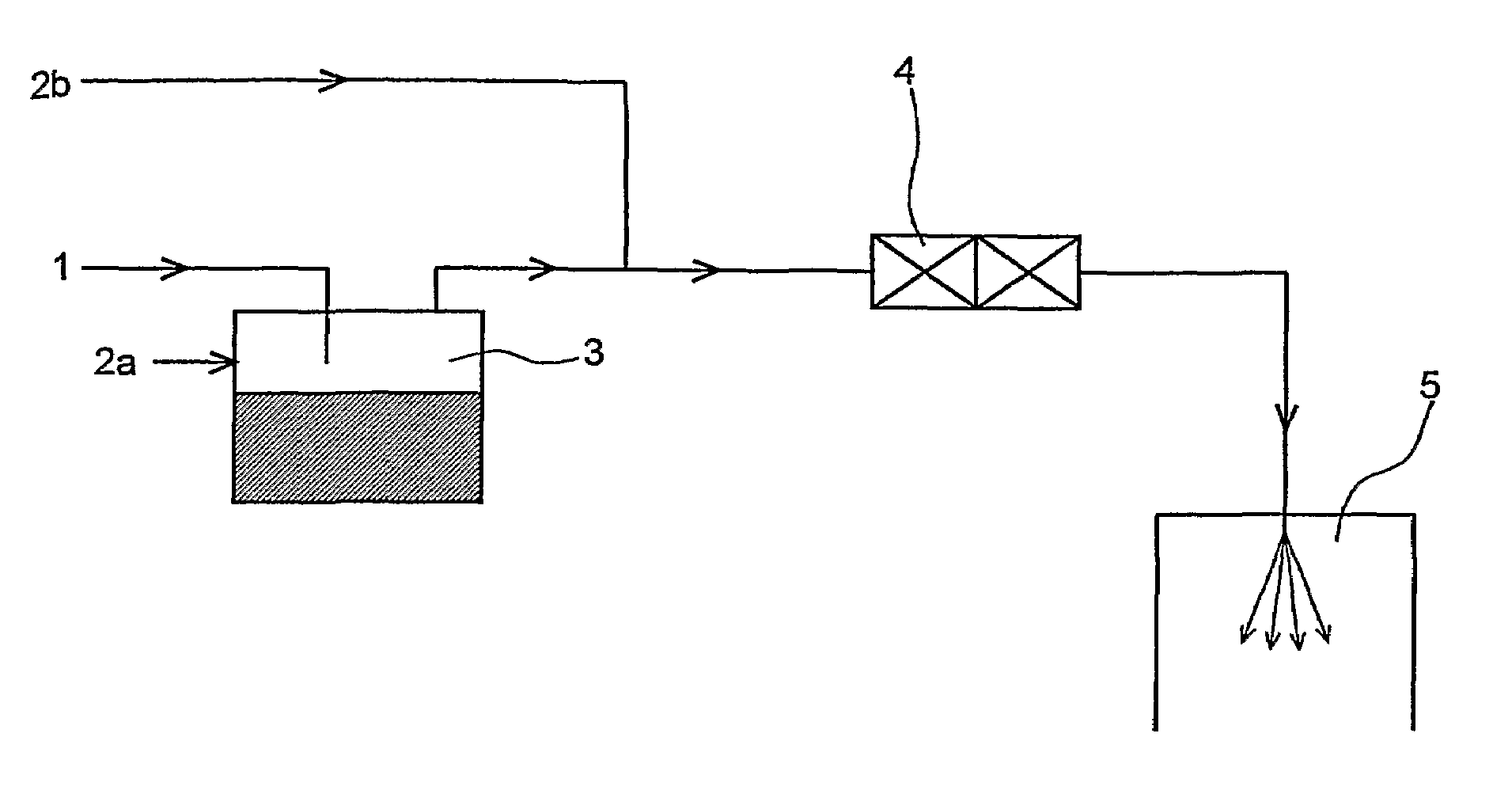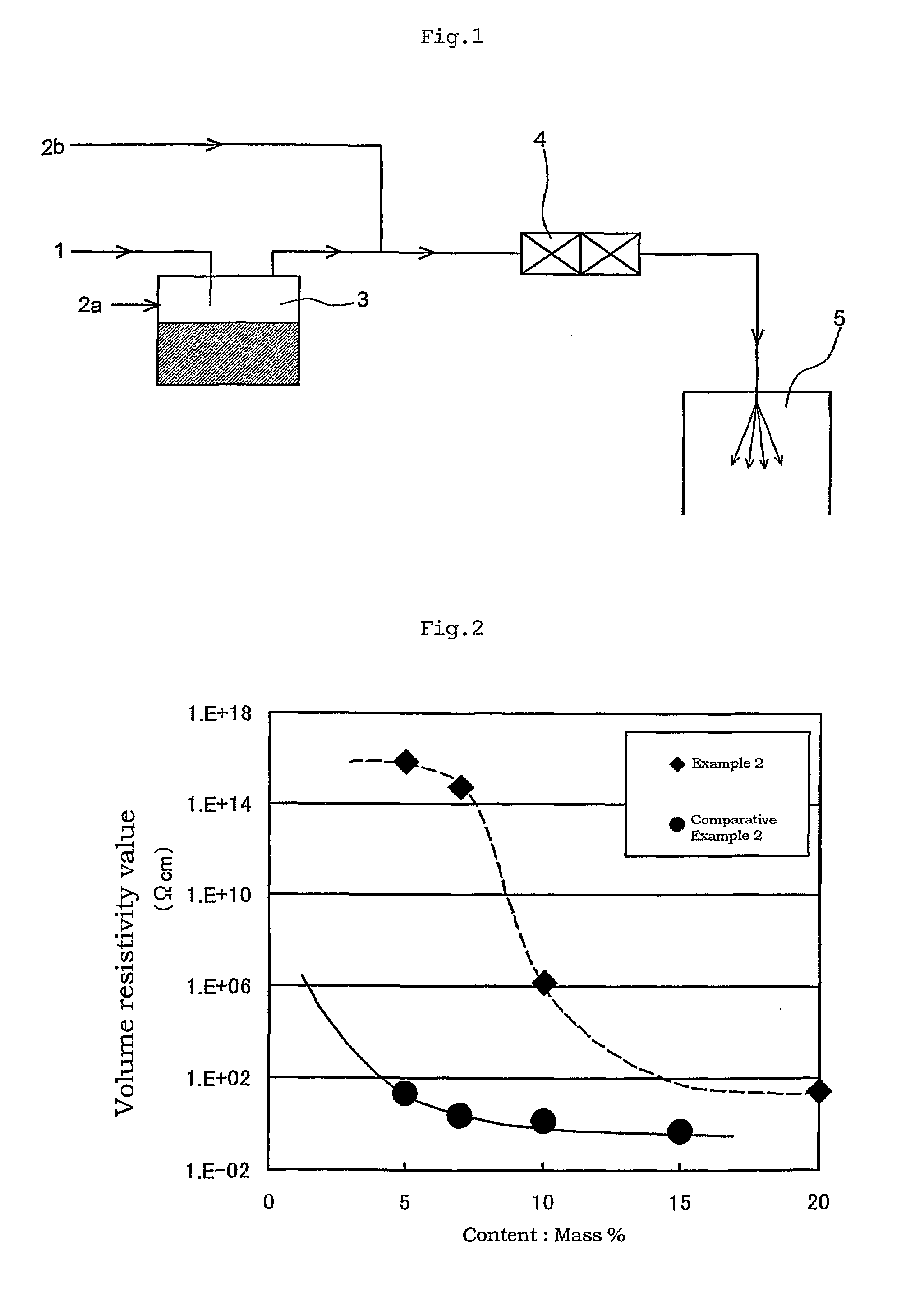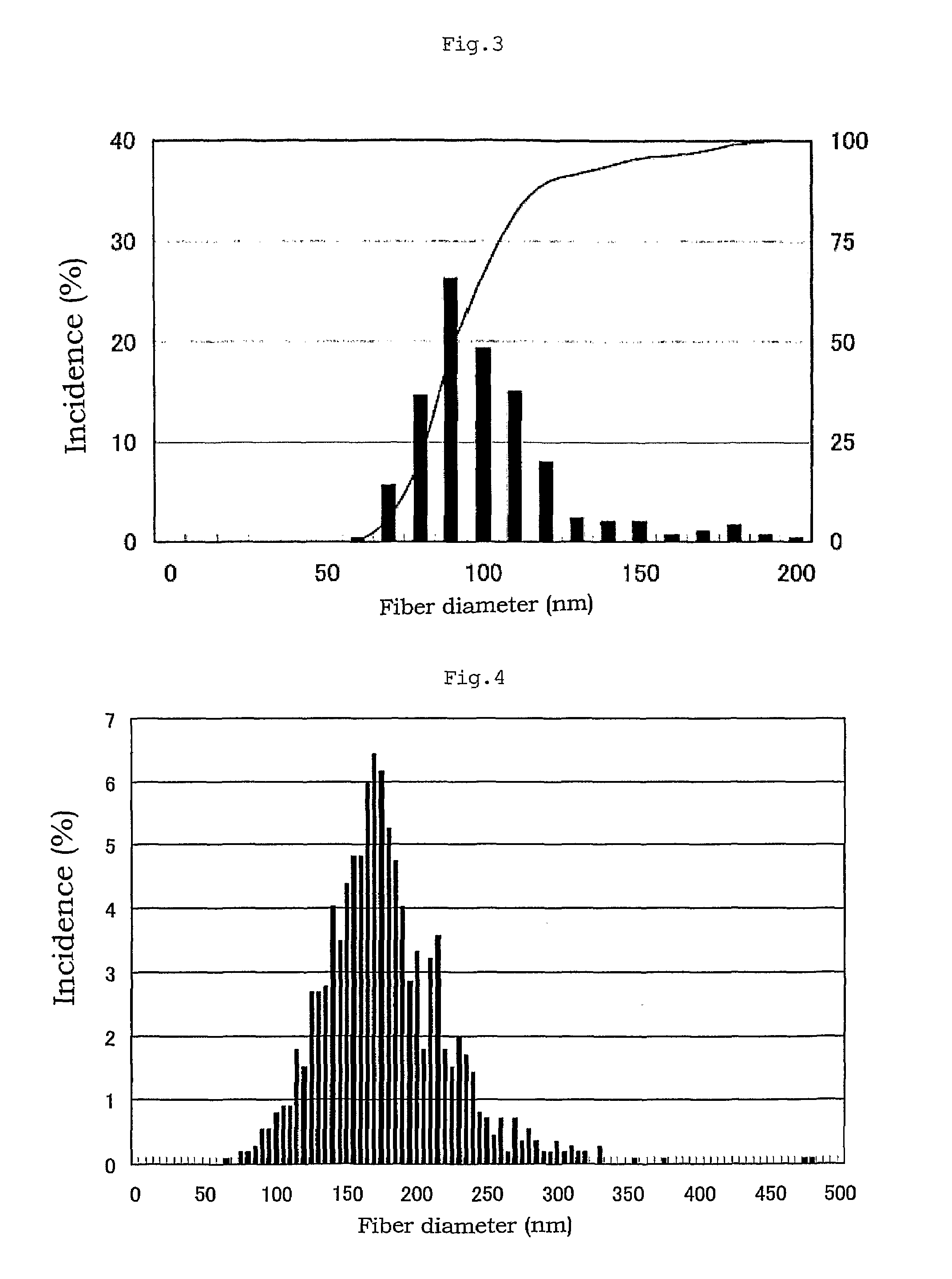Vapor grown carbon fiber, production method thereof and composite material containing the carbon fiber
a technology of carbon fiber and composite materials, which is applied in the direction of carbonsing rags, transportation and packaging, physical/chemical process catalysts, etc., can solve the problems of unsatisfactory electrical conductivity of composite materials containing carbon fibers, and achieve excellent electrical conductivity and thermal conductivity
- Summary
- Abstract
- Description
- Claims
- Application Information
AI Technical Summary
Benefits of technology
Problems solved by technology
Method used
Image
Examples
example 1
[0046]Vapor grown carbon fiber was produced by use of apparatuses as shown in the flow diagram of FIG. 1.
[0047]As a reaction tube (5) was employed a vertical heating furnace (inner diameter: 370 mm, length: 2,000 mm) having, on its top, a nozzle unit for supplying raw material gas.
[0048]The temperature of a gasifier (3) was regulated to 500° C. Nitrogen gas was caused to pass through the reaction system, to thereby purge oxygen gas from the system. Subsequently, hydrogen gas was caused to pass through the system, to thereby fill the system with hydrogen gas. Thereafter, the temperature of the reaction tube was elevated to 1,250° C. Reaction was initiated by feeding a liquid raw material (30 g / min) into the gasifier by use of a pump. The thus-gasified raw material was fed into a path by use of hydrogen gas (50 L / min) serving as a carrier gas. Before being fed into the reaction tube, the raw material gas was further mixed with hydrogen gas (400 L / min) by use of a static mixer (4). The...
example 2
[0053]By use of a 30-mmφ one-directional twin-screw extruder (product of Ikegai, Ltd.), the vapor grown carbon fiber produced in Example 1 was dispersed in polycarbonate in different amounts ranging from 5 to 15 mass %, to thereby prepare different carbon fiber / polycarbonate composite materials. The preparation rate was regulated to 3 kg / h. Each of the thus-prepared composite materials was molded into a plate (100 mm×100 mm×2 mm thick) by use of a 75-t injection molding apparatus (product of FANUC LTD.). The volume resistivity of the plate was measured by means of the four-probe method. The results are shown in FIG. 2.
example 3
[0054]The vapor grown carbon fiber produced in Example 1 was compressed to a density of 0.1 g / cm3, and then the thus-compressed fiber was milled by use of a feather mill, to thereby yield carbon fiber having a bulk density of 0.04 g / cm3. By use of a 30-mmφ one-directional twin-screw extruder (product of Ikegai, Ltd.), the resultant carbon fiber was dispersed in polycarbonate in an amount of 5 mass %, to thereby prepare a carbon fiber / polycarbonate composite material. The preparation rate was regulated to 10 kg / h. The thus-prepared composite material was molded into a plate (100 mm×100 mm×2 mm thick) by use of a 75-t injection molding apparatus (product of FANUC). The volume resistivity of the plate was measured by means of the four-probe method, and was found to be 1×102 Ωcm.
PUM
| Property | Measurement | Unit |
|---|---|---|
| density | aaaaa | aaaaa |
| diameter | aaaaa | aaaaa |
| aspect ratio | aaaaa | aaaaa |
Abstract
Description
Claims
Application Information
 Login to View More
Login to View More - R&D
- Intellectual Property
- Life Sciences
- Materials
- Tech Scout
- Unparalleled Data Quality
- Higher Quality Content
- 60% Fewer Hallucinations
Browse by: Latest US Patents, China's latest patents, Technical Efficacy Thesaurus, Application Domain, Technology Topic, Popular Technical Reports.
© 2025 PatSnap. All rights reserved.Legal|Privacy policy|Modern Slavery Act Transparency Statement|Sitemap|About US| Contact US: help@patsnap.com



